Joshimath is a town located in the Chamoli district of the Indian state of Uttarakhand. It is situated at an altitude of 1,890 meters above sea level in the western Himalayas, and is surrounded by the Nanda Devi and Nar Parbat mountain ranges.
Joshimath, also referred to as Jyotirmath, holds religious significance as the winter residence of Lord Badrinath. It was established as one of the four ‘Maths’ by Adi Shankaracharya in the 8th century. Visitors have the opportunity to see the revered Kalpvriksha tree, believed to be 1200 years old. Joshimath is also home to numerous temples, such as Narsimha and Gaurishankar, that attract many devotees.

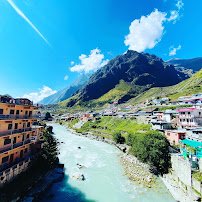
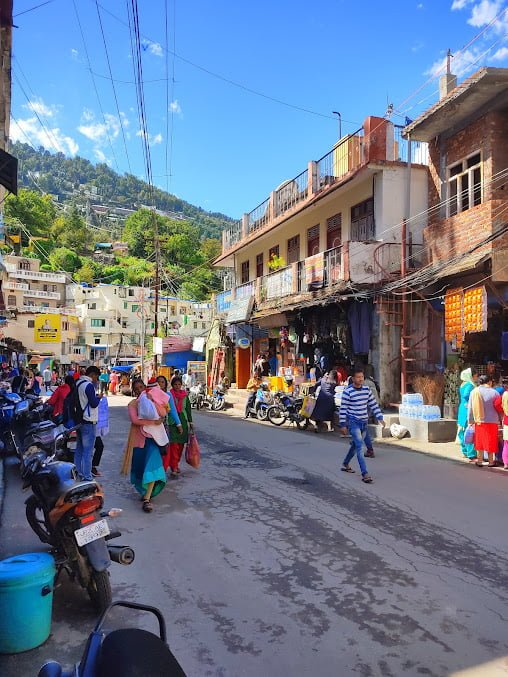
Joshimath is an important religious and cultural center, and is home to a number of temples and other religious sites. The town is also a popular base for trekking and other adventure activities, and is a gateway to the Valley of Flowers National Park, which is a UNESCO World Heritage site.
Joshimath is located about 260 kilometers from the capital city of Dehradun and is easily accessible by road. It is also connected to the town of Rishikesh by a cable car, which offers beautiful views of the surrounding mountains. The town can be visited throughout the year, but the best time to visit is from April to June and September to November, when the weather is pleasant.
Places to visit in Joshimath
Here are a few places that you might want to visit while in Joshimath:
- Narsingh Temple: This temple is dedicated to the Hindu god Vishnu and is one of the most important temples in Joshimath. It is located in the center of the town and is an important place of worship for Hindus.It is only 4 km away from the Joshimath
- Gurso Bugyal: This high-altitude meadow is located about 7 kilometers from Joshimath and is a popular destination for trekking and picnics. It offers beautiful views of the Himalayas and is a great place to spot various species of birds and animals.
- Tapovan: This holy site is located about 13.8 kilometers from Joshimath and is known for its natural hot springs. It is a popular destination for pilgrims and is believed to have medicinal properties.
- Auli: This ski resort is located about 16 kilometers from Joshimath and is known for its beautiful views of the Himalayas and excellent skiing conditions. It is a popular destination for winter sports enthusiasts.
- Valley of Flowers National Park: This UNESCO World Heritage site is located about 20 kilometers from Joshimath and is known for its beautiful alpine meadows and rare species of flowers and plants. It is a popular destination for trekking and nature photography.
- Badrinath Temple: This temple is located about 45 kilometers from Joshimath and is one of the most important Hindu temples in the region. It is dedicated to the god Vishnu and is an important place of pilgrimage for Hindus.
Narsingh Temple:
The Narsingh Temple is a Hindu temple located in the town of Joshimath in the Chamoli district of the Indian state of Uttarakhand. It is dedicated to the Hindu god Vishnu, who is believed to incarnate as the man-lion avatar Narasimha to protect his devotees. According to legend, the Narsingh Temple was built by the sage Jaimini, who is said to have attained enlightenment at this location.
The temple is known for its beautiful architecture and is a popular tourist destination in Joshimath. It is also one of the 108 Divya Desams, or holy shrines, of Vishnu.The temple is one of the most important temples in Joshimath and is an important place of worship for Hindus.


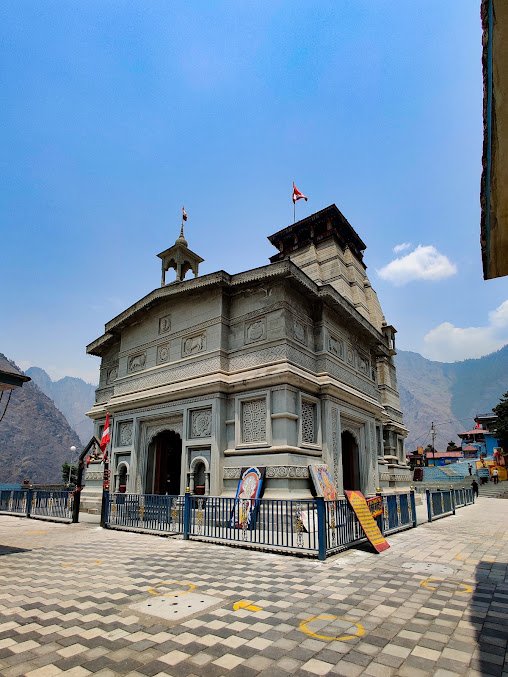
The temple is said to have been established by the Hindu sage Adi Shankaracharya in the 8th century. It is a popular destination for pilgrims, who come to offer prayers and seek blessings. The temple is also known for its beautiful architecture and is a popular tourist attraction in Joshimath.
The Narsingh Temple is open to visitors throughout the year and can be reached by road from major cities in Uttarakhand such as Dehradun and Haridwar. The best time to visit the temple is from April to June and September to November, when the weather is pleasant.
Gurso Bugyal
Gurso Bugyal is a high-altitude meadow located in the Chamoli district of the Indian state of Uttarakhand. It is situated at an altitude of 3,050 meters above sea level in the western Himalayas and is surrounded by the Nanda Devi and Nar Parbat mountain ranges.
Gurso Bugyal is a popular destination for trekking and picnics, and is known for its beautiful views of the Himalayas. It is a great place to spot various species of birds and animals, and is a paradise for nature lovers. The meadow is also home to a number of small temples and other religious sites, which attract pilgrims and spiritual seekers.
Gurso Bugyal is located about 7 kilometers from the town of Joshimath and can be reached by a trek from there. The best time to visit the meadow is from April to June and September to November, when the weather is pleasant. It is recommended to carry warm clothing and other necessary supplies, as the weather can be unpredictable at high altitudes.
A travel guide to Joshimath
- Visit the Narasimha Temple: This ancient temple is dedicated to the Hindu god Narasimha and is one of the most popular tourist attractions in Joshimath.
- Go skiing in Auli: Auli is a popular ski destination located just a few hours from Joshimath. There are several ski resorts in the area, as well as opportunities for cross-country skiing and snowboarding.
- Explore the local markets: Joshimath has several markets where you can find local handicrafts, textiles, and other souvenirs. This is a great way to support the local economy and bring home a unique memento of your trip.
- Take a day trip to the Valley of Flowers National Park: Located just a few hours from Joshimath, this UNESCO World Heritage Site is home to a wide variety of flowers and other plant species. It’s a popular destination for hikers and nature lovers.
- Visit the Badrinath Temple: This famous Hindu temple is located just a short distance from Joshimath and is a popular destination for pilgrims.
- Go rafting on the Alaknanda River: The Alaknanda River is one of the main tributaries of the Ganges, and it offers some great opportunities for rafting and kayaking.
A hike or trekking guide
Joshimath is located in the Garhwal region of the Himalayas, so there are likely many opportunities for hiking and trekking in the area. Share your recommendations for the best trails, what to bring, and any safety tips.
Sure! Here are some recommendations for hiking and trekking in the Joshimath area:
- Valley of Flowers National Park: This UNESCO World Heritage Site is located just a few hours from Joshimath and offers a variety of hiking trails through fields of colorful flowers. The best time to visit is from June to October, when the flowers are in bloom.
- Nanda Devi National Park: Located in the Himalayan mountain range, this national park offers a variety of challenging treks through the beautiful wilderness. The park is home to a wide variety of plant and animal species, including the Asiatic black bear, snow leopard, and blue sheep.
- Roopkund Trek: This popular trek takes you through the remote and beautiful region of the Himalayas, with stops at several beautiful lakes along the way. The trek is considered to be moderate to challenging and typically takes about a week to complete.
- Kunjapuri Temple Trek: This shorter trek takes you to the Kunjapuri Temple, which offers panoramic views of the Himalayas. The trek is considered to be moderate in difficulty and can be completed in a day.
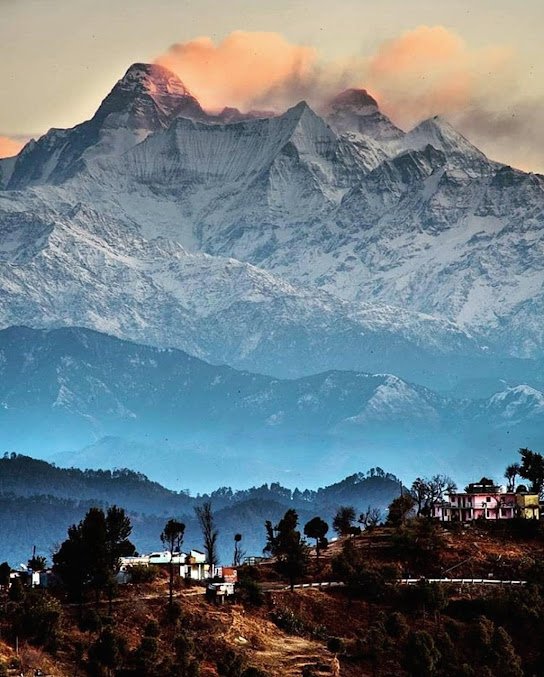


Before embarking on any trek, it’s important to be well-prepared. Make sure to bring plenty of water, snacks, and warm clothing, and let someone know your itinerary. It’s also a good idea to hire a guide or go with a group, as the trails can be challenging and it’s important to be safe.
A history of Joshimath
Joshimath is a town located in the Chamoli district of the Indian state of Uttarakhand. It is situated in the Garhwal region of the Himalayas, at an altitude of about 1,890 meters (6,200 feet). The town is named after the Hindu sage Jaimini, who is believed to have meditated in the area.
Joshimath has a long and rich history, dating back to ancient times. According to legend, the town was founded by the Hindu sage Adi Shankara in the 8th century. Shankara established a math (monastery) in Joshimath, which became an important center of learning and spiritual practice. The town is also mentioned in the Hindu epic Mahabharata, which tells the story of a war between the Pandavas and the Kauravas that took place in the region.
In the 19th and 20th centuries, Joshimath became an important center for British colonial administrators, who used the town as a base for their operations in the region. The town also played a key role in the Indian independence movement, with many local people participating in the struggle for freedom from British rule.
Today, Joshimath is a popular tourist destination, known for its beautiful natural surroundings and rich cultural heritage. It is also an important center of Hindu pilgrimage, with several important temples located in the area.
A nature guide to Joshimath
Here is some information about the local flora and fauna in Joshimath and the surrounding region:
- Flora: The region around Joshimath is home to a wide variety of plant species, including alpine grasslands, coniferous forests, and meadows. Some of the common plant species found in the area include oak, fir, pine, and rhododendron.
- Fauna: The region is home to a diverse array of animal species, including mammals, birds, reptiles, and amphibians. Some of the common animal species found in the area include leopards, snow leopards, bears, musk deer, and blue sheep. The region is also home to a variety of bird species, including Himalayan monal, Himalayan griffon, and lammergeier.
- Conservation efforts: There are several conservation efforts underway in the region to protect the local flora and fauna. For example, the Nanda Devi National Park and the Valley of Flowers National Park are both protected areas that are home to a wide variety of plant and animal species. There are also efforts to protect endangered species, such as the snow leopard and the Asiatic black bear.
Why is Joshimath famous?
Joshimath is famous for a number of reasons. It is located in the Garhwal region of the Himalayas and is known for its beautiful natural surroundings and outdoor recreation opportunities, such as hiking and skiing. The town is also an important center of Hindu pilgrimage, with several important temples located in the area, including the Narasimha Temple and the Badrinath Temple.
In addition to its natural and spiritual significance, Joshimath has a rich cultural heritage and is home to a diverse community of people. The town is also an important center of education, with several schools and colleges located in the area.
Overall, Joshimath is a popular tourist destination and is well-known for its natural beauty, cultural richness, and spiritual significance.
Does Joshimath have snowfall?
Yes, Joshimath experiences snowfall during the winter months. Joshimath is located in the Himalayan mountain range, at an altitude of about 1,890 meters (6,200 feet), so it can get quite cold during the winter. The town is also located near the popular ski destination of Auli, which receives a significant amount of snowfall each year.
The snowfall in Joshimath and the surrounding region typically begins in December and lasts until February or March. The amount of snowfall can vary from year to year, with some winters being much colder and snowier than others.
Are Auli and Joshimath the same?
No, Auli and Joshimath are two different places. Auli is a ski destination located in the Chamoli district of the Indian state of Uttarakhand, while Joshimath is a town located in the same district.
Auli is situated at an altitude of about 2,500 meters (8,200 feet) above sea level and is known for its ski slopes and beautiful views of the Himalayas. It is located just a few hours from Joshimath, and many people visit both places as part of the same trip.
Joshimath is a town located at an altitude of about 1,890 meters (6,200 feet). It is an important center of Hindu pilgrimage and is known for its natural beauty and cultural heritage. The town is located near several popular tourist destinations, including the Valley of Flowers National Park and the Nanda Devi National Park.
Best time to visit Joshimath
The best time to visit Joshimath depends on what you hope to do during your visit. Here are a few things to consider:
- If you want to go skiing or snowboarding in Auli, the best time to visit is from December to February, when the ski slopes are open and the weather is cold and snowy.
- If you want to see the flowers in bloom at the Valley of Flowers National Park, the best time to visit is from June to October, when the flowers are at their peak.
- If you want to avoid the coldest temperatures, the best time to visit Joshimath is from April to June or September to November, when the weather is generally mild and pleasant.
Overall, the weather in Joshimath can be quite varied, with cold winters and mild to warm summers. It’s a good idea to check the weather forecast before your visit and pack accordingly.
Joshimath to Auli ropeway
The Joshimath-Auli ropeway, also known as the Auli Cable Car, is a gondola lift that connects the towns of Joshimath and Auli in the Indian state of Uttarakhand. The ropeway is operated by the Garhwal Mandal Vikas Nigam (GMVN), a government-owned corporation that is responsible for the development of tourism in the region.
The Joshimath-Auli ropeway is one of the longest ropeways in Asia, with a total length of 4.15 kilometers (2.58 miles). It operates from December to March and offers beautiful views of the Himalayan mountain range and the surrounding forests. The ropeway is a popular tourist attraction and is a convenient and scenic way to travel between Joshimath and Auli.
Joshimath Hotels
Here are a few hotels in Joshimath that you might consider for your stay:
- The GMVN Tourist Rest House: This budget-friendly hotel is operated by the Garhwal Mandal Vikas Nigam (GMVN), a government-owned corporation that is responsible for the development of tourism in the region. The hotel offers basic amenities and is a good option for travelers on a budget.
- The GMVN Tourist Bungalow: This hotel is also operated by the GMVN and offers a higher level of comfort and amenities than the Tourist Rest House. It is located in a scenic spot and offers beautiful views of the Himalayas.
- The Himalayan Eco Lodge: This eco-friendly hotel is located in a peaceful and serene setting and offers comfortable accommodations and a range of amenities. It is a good option for travelers who are looking for a more upscale experience.
- The Auli Nature Camp: This hotel is located in Auli, just a short distance from Joshimath. It offers comfortable tents and cottages, as well as a range of outdoor activities such as skiing, snowboarding, and trekking.
Why land in Joshimath sinking
There are several potential reasons why land in Joshimath may be sinking. One possible reason is that the area is experiencing soil erosion, which can cause the ground to sink as the soil is washed away. Another possibility is that the land is sinking due to underground mining or the extraction of natural resources, which can cause the ground to collapse. It is also possible that the land is sinking due to natural geological processes, such as the settling of soil or the collapse of underground caverns. Without more information, it is not possible to say for certain what is causing the land in Joshimath to sink.
There are several potential reasons why land may sink:
- Soil erosion: When soil is washed away by water or wind, it can cause the ground to sink. This can be caused by natural processes, such as heavy rainfall or flooding, or by human activities, such as overgrazing or improper land management.
- Underground mining: Extracting natural resources, such as coal, oil, and natural gas, can cause the ground to sink. When these resources are removed, it can create voids underground that cause the ground to collapse.
- Subsidence: This is the sinking of land due to natural geological processes. It can be caused by the settling of soil, the collapse of underground caverns, or the withdrawal of underground fluids, such as oil or water.
- Human activities: There are also several human activities that can cause land to sink, including the construction of buildings, roads, and other infrastructure, as well as the overpumping of groundwater.
According to experts, landslides in Joshimath are caused by haphazard construction, seepage of water, erosion of topsoil and obstruction of natural flow of water streams due to man-made reasons. The city is geologically sensitive, being situated on a ridge running east-west. To the southwest of Vishnuprayag, just below the city, is the confluence of the Dhauliganga and Alaknanda rivers. River erosion is also responsible for this landslide.
It sounds like the landslides in Joshimath are being caused by a combination of natural and human factors. The natural factors, such as the geology of the area and river erosion, may make the region more prone to landslides. However, it appears that human activities, such as haphazard construction and the obstruction of natural water flow, are also contributing to the problem. It is important for the city to address these man-made factors in order to reduce the risk of landslides in the future.
Erosion of topsoil and obstruction of natural flow of water streams due to man-made reasons
Soil erosion occurs when the top layer of soil is washed away by water or wind. This can be caused by natural processes, such as heavy rainfall or flooding, or by human activities, such as overgrazing, improper land management, or the construction of buildings, roads, and other infrastructure. When soil is eroded, it can cause the ground to sink as the soil is no longer there to support it.
The obstruction of natural water flow can also contribute to soil erosion and landslides. When natural water channels, such as streams and rivers, are blocked or diverted, it can cause the water to flow in unintended directions, leading to erosion and landslides. This can be caused by human activities, such as the construction of dams or the development of land. It is important to maintain the natural flow of water in order to prevent erosion and landslides.
The city is geologically sensitive, being situated on a ridge running east-west.
A ridge is a geological feature that is characterized by a long, narrow elevation of land. Ridges are typically formed by the movement of tectonic plates and the uplift of the Earth’s crust. When a city is situated on a ridge, it can be more vulnerable to geological hazards, such as landslides and earthquakes, as the ground is often steep and unstable. If the ridge is running east-west, it means that it is oriented in a direction that is perpendicular to the typical direction of tectonic plate movement, which is generally north-south. This orientation can make the ridge more susceptible to landslides, as the steep slopes can be more prone to erosion.
Why is it called Joshimath?
The name “Joshimath” is derived from the Sanskrit word “Jyotirmath,” which means “place of enlightenment.” The town is named after the famous Hindu sage Jaimini, who is said to have attained enlightenment at this location. Joshimath is an important religious and cultural center, and it is home to several important temples and monasteries.
Sage Jaimini
Jaimini was a Hindu sage and an important figure in ancient Indian philosophy. He is best known as the founder of the Mimamsa school of Hindu philosophy, which emphasizes the study of the Vedas, the sacred texts of Hinduism. Jaimini is also considered to be one of the main disciples of the sage Vyasa, who is credited with composing the Mahabharata, one of the two major Sanskrit epics of ancient India. According to legend, Jaimini attained enlightenment at Joshimath, a town located in the Chamoli district of the Indian state of Uttarakhand, and the town is named after him.
Does Joshimath have an airport?
No, Joshimath does not have an airport. The nearest airport to Joshimath is Jolly Grant Airport in Dehradun, which is about 272 kilometers from the town. From the airport, you can hire a taxi or take a bus to reach Joshimath. There are also several airports located in other cities in the region, such as Pantnagar Airport, which is about 280 kilometers from Joshimath, and Indira Gandhi International Airport in Delhi, which is about 520 kilometers from the town.
The Kalpavriksha Temple
The Kalpavriksha Temple is a Hindu temple located in Joshimath, a town in the Chamoli district. The temple is dedicated to the deity Narasimha, an avatar of the Hindu god Vishnu, and is considered to be an important religious and cultural center. According to legend, the Kalpavriksha Temple was built by the sage Jaimini, who is said to have attained enlightenment at this location. The temple is also known for its beautiful architecture and is a popular tourist destination in Joshimath.


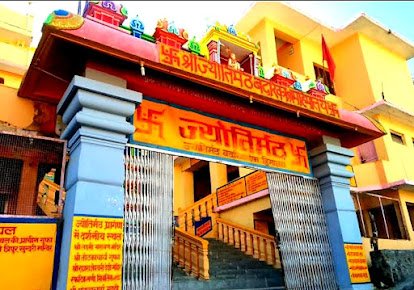
Jyotirmath Monastery
The monastery is an important center of Hindu learning and is associated with Adi Shankara, a Hindu philosopher and theologian who is credited with reviving and spreading the Advaita Vedanta philosophy. According to legend, Adi Shankara established the Jyotirmath Monastery and appointed one of his disciples, Padmapada, as the head of the monastery. The monastery is also home to the Shankaracharya of Jyotirmath, who is the spiritual leader of the monastery and is considered to be the highest authority on Advaita Vedanta. The Jyotirmath Monastery is a popular tourist destination in Joshimath and is known for its beautiful architecture and peaceful atmosphere.
Is Joshimath and Vishnuprayag same?
No, Joshimath and Vishnuprayag are not the same place. Joshimath is a town located in the Chamoli district of the Indian state of Uttarakhand, while Vishnuprayag is a town located in the same district. The two towns are located in close proximity to each other and are connected by a motorable road. Vishnuprayag is a Hindu pilgrimage town and is named after the confluence of the Alaknanda and Dhauliganga rivers, which is considered to be a sacred site. Joshimath is also an important religious and cultural center and is home to several important temples and monasteries.
How to reach Joshimath
Joshimath can be accessed by various modes of transportation, including air, rail, and road.
By Air: The nearest airport to Joshimath is Jolly Grant Airport located in Dehradun, which is about 272 kilometers away. Visitors can take a bus or cab to reach Joshimath from the airport.
By Rail: The closest railway stations to Joshimath are located in Haridwar and Rishikesh, which are 277 km and 250 km away respectively. Visitors can take a taxi or bus to reach Joshimath from these stations.

